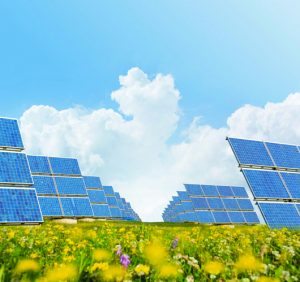Laura Nayibi Arias, Culture Editor

Alternative energy sources are forms of energy that differ from conventional procedures of creating energy. Most alternative energy sources are intended to be more environmentally friendly. According to the Council on Foreign Relations, our largest energy sources are oil, coal and of course natural gas.
The extraction of natural gas has become extremely popular in some parts of the United States. Companies like Chesapeake Energy are making millions upon millions of dollars from the extraction of natural gas from shale rock, as far as 3,000 ft. into the earth. This is called hydraulic fracturing, or fracking. One of the problems with hydraulic fracturing is that, according to Hydraulicfracturing.com, it uses between 65,000 and 600,000 gallons of freshwater per single frack. Furthermore, it allows gases from the extraction to escape during the drilling, contaminating water bodies. In addition, the water used for the drilling is later disposed into water bodies, sometimes even drinkable water sources. As of October 15, Sustainablebusiness.com reports that there is a new law that allows fracking at state-owned colleges and universities.
Neither oil, coal, nor natural gas as forms of energy are environmentally friendly. In brief, this is because they emit devastating amounts of carbon dioxide into the atmosphere which traps heat, thus making the earth warmer. This is called the greenhouse effect. In addition, the gases that are released into the air from the production of energy, for example carbon dioxide and sulfur dioxide, pollute our air and water bodies which directly affect us.
The amount of carbon an entity emits is called a carbon footprint. Currently, many countries are trying to reduce their carbon footprint as they have realized that global warming is rapidly developing. A way to move away from the conventional energy sources, and in turn reduce our carbon footprint, is through use of renewable energy sources. These alternative energy sources, compared to using oil and coal, are popular today not only because they are economically feasible, but because they are environmentally friendly. As stated by a reporter on The Green Energy Times, Lakes Region Community College is saving $10,000 yearly on energy bills after they installed “photovoltaic technology and improved temperature control units.” Basically they are now operating on a campus that is powered by solar means and saving thousands of dollars a year from their environmentally cautious decision.
So what exactly does “environmentally friendly” mean? In this case, “environmentally friendly” means many things depending on the source of alternative energy being used. A source of alternative energy is solar energy. As suggested by Renewableenergydev.com, some major benefits of solar energy are that:
1. Solar energy is not only sustainable; it is renewable and this means that we will never run out of it. It is about as natural a source of power as it is possible to generate. Not only are we able to refuel our vehicles with it we can heat our water and light our homes.
2. We can generate our own source of electricity via solar panels potentially enabling us to live off grid. In other words we need not be dependent on the public utility companies to supply our power and we also won’t be required to pay for our power.
3. The creation of solar energy requires little maintenance. Once the solar panels or troughs have been installed and they are brought up to maximum efficiency, there is little else to do to ensure they are in working order.
Solar energy is environmentally friendly because it uses the energy of the sun which is renewable because it is infinite; we do not have a limited amount of it. But there is no such thing a source of energy that is completely harmless to the environment. Though through its function solar energy does not pollute the earth, the creation of solar panels does require the use of resources and money. This will be the case with most, if not all, renewable energy sources. Still, moving to alternative energy sources is beneficial for both human and environmental health.
Find out more by visiting Greenenergytimes.org
Leave a Reply